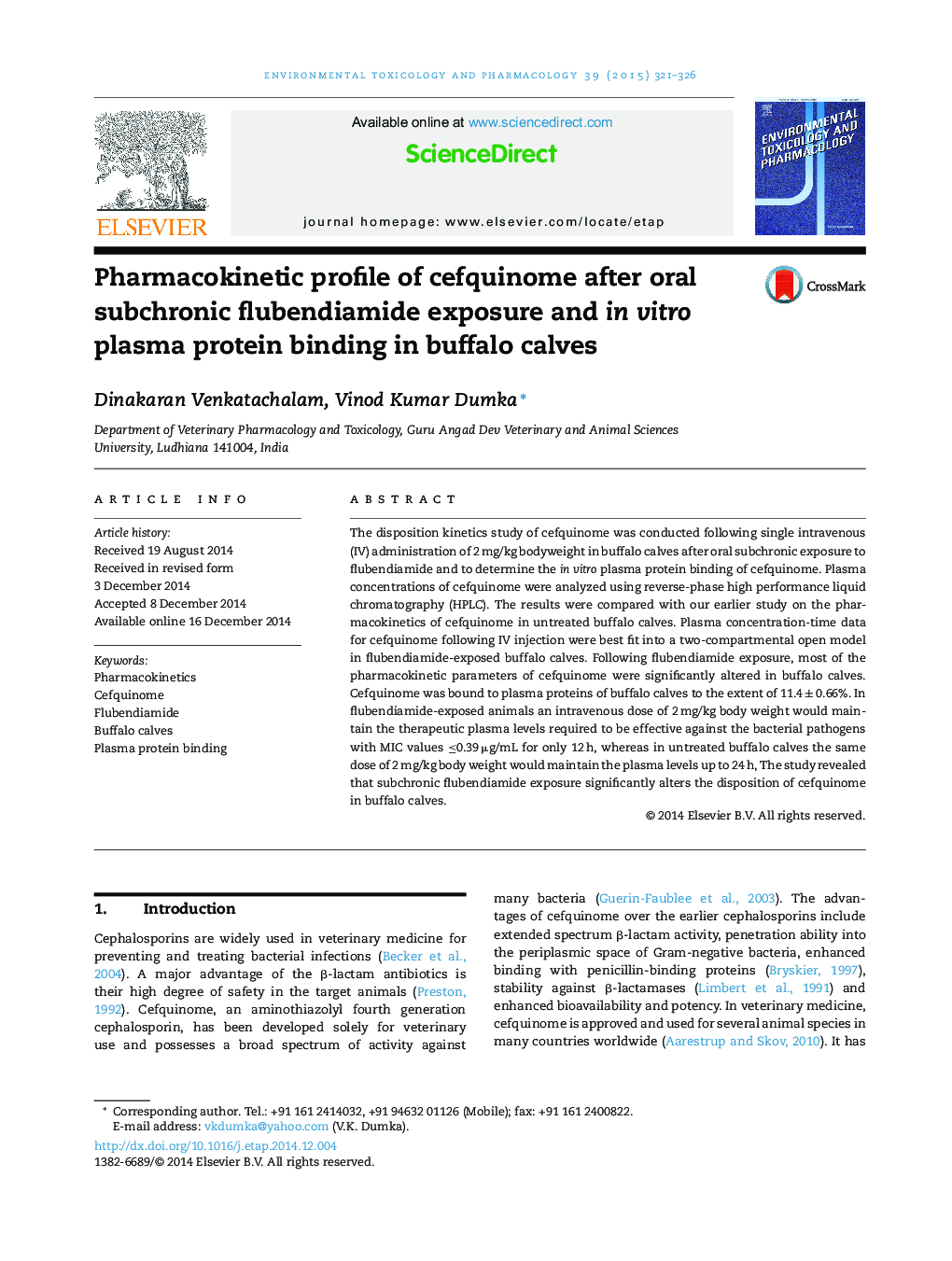| Article ID | Journal | Published Year | Pages | File Type |
|---|---|---|---|---|
| 2583292 | Environmental Toxicology and Pharmacology | 2015 | 6 Pages |
•Cefquinome disposition during flubendiamide exposure was studied in buffalo calves.•Flubendiamide exposure altered the pharmacokinetics of cefquinome.•Cefquinome was bound to plasma proteins to the extent of 11.4 ± 0.66%.•2 mg/kg IV dose maintained therapeutic plasma levels up to 12 h.
The disposition kinetics study of cefquinome was conducted following single intravenous (IV) administration of 2 mg/kg bodyweight in buffalo calves after oral subchronic exposure to flubendiamide and to determine the in vitro plasma protein binding of cefquinome. Plasma concentrations of cefquinome were analyzed using reverse-phase high performance liquid chromatography (HPLC). The results were compared with our earlier study on the pharmacokinetics of cefquinome in untreated buffalo calves. Plasma concentration-time data for cefquinome following IV injection were best fit into a two-compartmental open model in flubendiamide-exposed buffalo calves. Following flubendiamide exposure, most of the pharmacokinetic parameters of cefquinome were significantly altered in buffalo calves. Cefquinome was bound to plasma proteins of buffalo calves to the extent of 11.4 ± 0.66%. In flubendiamide-exposed animals an intravenous dose of 2 mg/kg body weight would maintain the therapeutic plasma levels required to be effective against the bacterial pathogens with MIC values ≤0.39 μg/mL for only 12 h, whereas in untreated buffalo calves the same dose of 2 mg/kg body weight would maintain the plasma levels up to 24 h, The study revealed that subchronic flubendiamide exposure significantly alters the disposition of cefquinome in buffalo calves.
Graphical abstractFigure optionsDownload full-size imageDownload as PowerPoint slide
